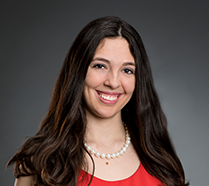Reflections from our Super Youth Advocates: Gabriella Tosado
 As a science graduate student, you are usually expected to keep your nose in your lab, produce good work, graduate, and move on to the big world of academia. However, over the past year as a STEM Super Youth Advocate, I have been able to integrate science, education, and civil engagement and am lucky that my department has allowed me to go outside those traditional academic boundaries.
As a science graduate student, you are usually expected to keep your nose in your lab, produce good work, graduate, and move on to the big world of academia. However, over the past year as a STEM Super Youth Advocate, I have been able to integrate science, education, and civil engagement and am lucky that my department has allowed me to go outside those traditional academic boundaries.
A chemical engineering faculty at UW created a research team to study the impacts of the lack of electricity on health when Hurricane Maria hit Puerto Rico, leaving its entire electrical system devastated. When someone has a medical condition that depends on an electrically powered medical device, their condition is much harder to maintain and is often exacerbated. Our team went to a small town in Puerto Rico and created renewable solar and energy battery systems. These energy systems were given to homes and community centers and were able to power medical devices such as mini fridges to store medicine and insulin, oxygen concentrators, and food pumps. We helped these families lift some of the burden of the lack of electricity. Scientists often focus on incremental changes that contribute to a solution for a societal problem, however, focusing on these details can make you forget the reason for the research in the first place: to help people.
Earlier this year, I was introduced to the Seattle-Limbe Sister City Association. This group has a sew circle every other week at a different place of worship (temple, church, mosque etc…) and people from across backgrounds come together and sew reusable pads. In other countries, such as Cameroon, disposable pads are too expensive, and periods are taboo, so young girls often miss a week of school per month. That week adds up quickly over the year and results in an education gap with a simple solution. Reusable pads. This group also teaches locals how to make them in the future, creating sustainable resources for the next generation and encouraging education.
In our department, many grad students have some sort of civic engagement that motivates their research and their everyday life. I think STEM standards should integrate civic engagement at an early age. STEM careers are meant to discover and engineer solutions to societal problems. From an early age, students should be taught to give back to the community and to problem solve solutions. The integration of civil engagement to STEM education will create well rounded students, and effective engaged scientists and engineers.